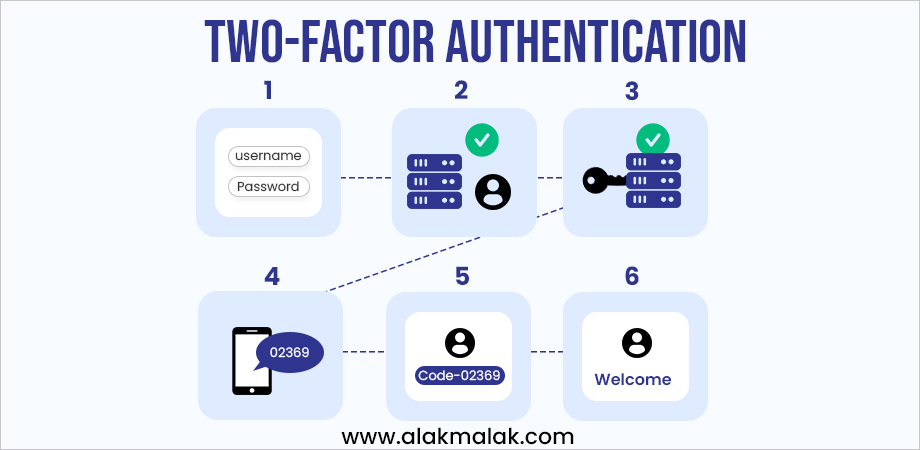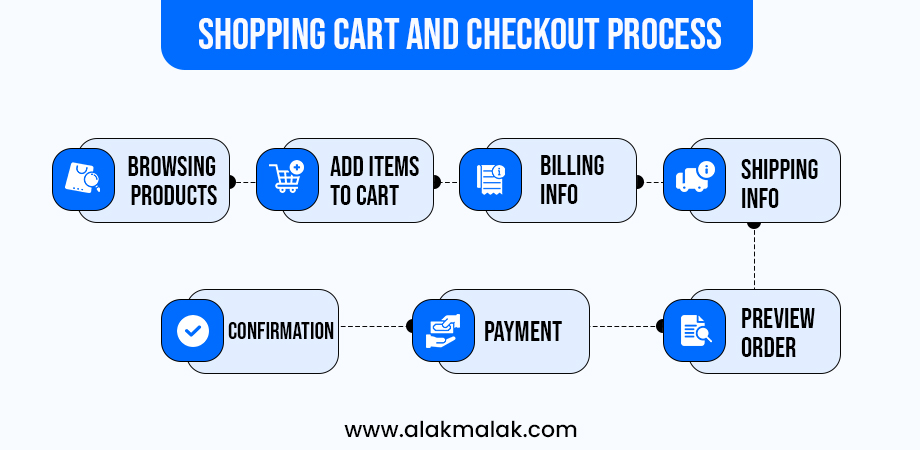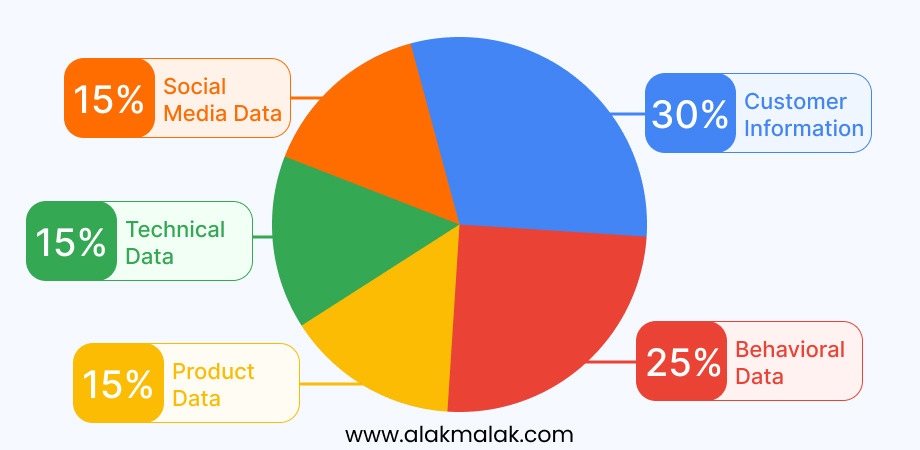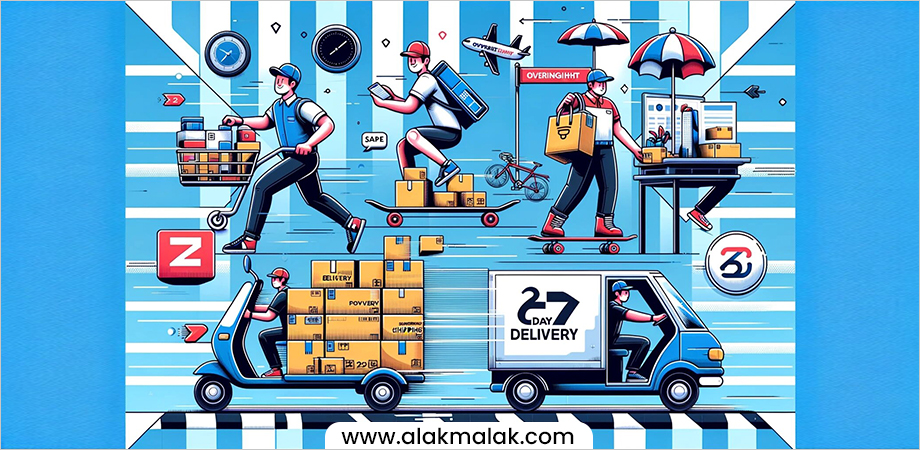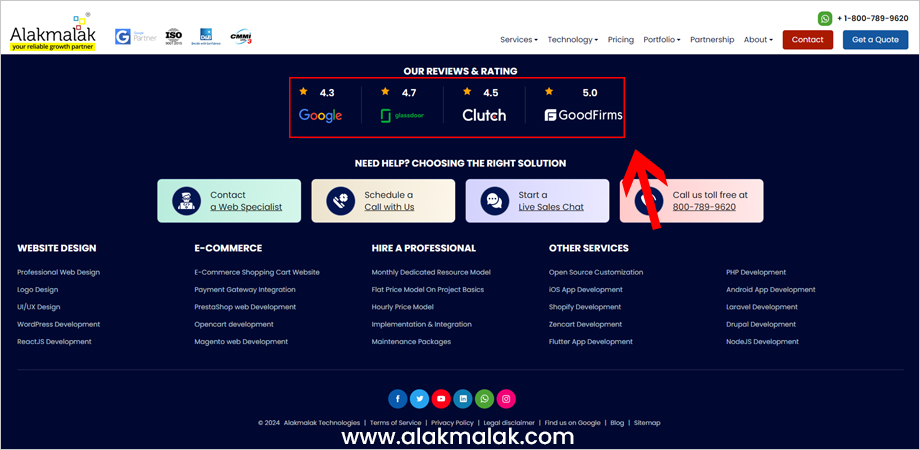Did you know that a whopping 80% of eCommerce businesses fail within their first two years? That’s right. Despite the potential of the online marketplace, many budding entrepreneurs stumble and fall before they can even get started.
But fear not! We’ve seen it all as an custom eCommerce website development company with 18 years of experience. From dazzling successes to crushing failures, we’ve learned the ins and outs of building high-performing eCommerce stores.
In this guide, we’ll highlight the top nine eCommerce Mistakes To Avoid When Building Online Store. We’ll show you what not to do and give you practical tips to help you sidestep these pitfalls. So, if you’re ready to avoid the common pitfalls and set yourself up for eCommerce success, keep reading! We’ve got your back every step of the way.
Top eCommerce Mistakes To Avoid When Building Online Store
1. Trying To Build An Online Store On Your Own
According to a study by Forrester Research, businesses that work with eCommerce professionals experience a 50% increase in conversion rates compared to those who try to build their online store on their own.
Building an online store all by yourself might seem like a cost-effective and straightforward option, but trust us when we say it’s not as easy as it looks. Sure, there are plenty of DIY website builders out there promising to help you create a stunning eCommerce store in a matter of hours, but here’s the harsh truth: unless you’re a web development wizard, chances are you’ll end up with a lacklustre website that fails to attract and convert customers.
Here’s the thing: building a successful eCommerce store requires more than just dragging and dropping a few images and text boxes onto a template. You need to consider things like user experience, search engine optimization, and mobile responsiveness – elements that DIY website builders often overlook.
The Solution: Hire a Professional eCommerce Website Development Company
If you want your online store to stand out from the crowd and drive sales, it’s worth investing in professional help. By hiring an experienced eCommerce website development company, you’ll have access to a team of experts who can create a custom website tailored to your unique needs and goals. From sleek design and intuitive navigation to seamless checkout and secure payment processing, they’ll ensure that your eCommerce store ticks all the boxes for success.
Many successful eCommerce businesses, such as Amazon and Zappos, have relied on professional eCommerce website development companies to create their online stores, which has contributed to their success and growth.
Research by Forrester found that companies with well-designed navigation and search functionalities experienced a 13% increase in revenue per visitor.
Navigation is a crucial aspect of any eCommerce website. It’s how customers find and explore products, move through different sections, and ultimately make a purchase. Poor website navigation can lead to a frustrating user experience, causing potential customers to leave your site without completing a transaction.
When visitors can’t easily find what they’re looking for, they’re more likely to get frustrated and abandon your site. Poor navigation can also create confusion, making it difficult for customers to understand your product categories, filter options, and checkout process.
To avoid this mistake, it’s essential to design a navigation system that is clear, intuitive, and easy to use. This can include:
- A well-structured menu with logical categories and subcategories
- Breadcrumb trails to help users track their location on the site
- Search functionality with autocomplete and filtering options
- Prominent calls-to-action (CTAs) for important actions like “Add to Cart” or “Checkout”
Successful eCommerce giants like Amazon and Zappos invest heavily in optimizing their navigation systems, ensuring that customers can easily find what they’re looking for and complete their purchases without any hurdles.
3. Choosing The Wrong Platform
A study by Forrester reveals that 43% of businesses cite challenges with their eCommerce platform as a major obstacle to growth.
The eCommerce platform you choose is the foundation of your online store. It’s the software that powers your website, allowing you to manage products, process orders, and handle various other critical functions. Selecting the wrong platform can have severe consequences for your business.
Not all eCommerce platforms are created equal. Some may lack essential features, have limited customization options, or fail to provide adequate security and scalability. Choosing the wrong platform can result in a subpar user experience, technical issues, and even potential data breaches, ultimately costing you customers and revenue.
Solution: Research and Select the Right eCommerce Platform
To avoid this mistake, it’s crucial to thoroughly research and evaluate different eCommerce platforms based on your specific business needs. Consider factors such as:
- Ease of use and user-friendliness
- Customization and design flexibility
- Integration with third-party services (e.g., payment gateways, shipping carriers)
- Scalability and ability to handle growth
- Security features and data protection
- Cost and ongoing maintenance requirements
Successful eCommerce brands like Shopify, BigCommerce, and WooCommerce have gained popularity and trust by offering robust, feature-rich platforms that cater to the diverse needs of online businesses.
4. Ignoring Mobile Users
In 2023, over half of all global website traffic originated from mobile devices [source: Statcounter].
The world is going mobile, and e-commerce businesses can’t afford to ignore this trend. Mobile devices have become an integral part of our daily lives, and people use them for everything, including shopping online. Ignoring mobile users can be a costly mistake for any e-commerce store.
Mobile users are a significant and growing segment of the online shopping market. As per Statista, in 2021, mobile commerce (m-commerce) sales constituted 72.9% of total e-commerce sales, with this figure expected to increase in the future. Neglecting mobile users can lead e-commerce stores to miss out on a considerable portion of their potential customer base and revenue. To ensure inclusivity and maximize sales, it’s crucial for e-commerce businesses to invest in responsive website design services.
Solution to Avoid This Mistake: Optimizing for Mobile Users
To ensure that your e-commerce store is mobile-friendly, you should consider the following:
- Responsive Web Design: Implement a responsive web design that automatically adjusts the website’s layout and content to fit different screen sizes and resolutions, providing an optimal viewing experience for mobile users.
- Mobile-Friendly Navigation: Simplify the navigation menu and make it easy for mobile users to browse and find what they’re looking for.
- Streamlined Checkout Process: Reduce the number of steps and form fields in the checkout process to make it more convenient for mobile users to complete their purchases.
- Fast Loading Speed: Optimize images, minimize code, and implement caching techniques to ensure that your e-commerce store loads quickly on mobile devices.
By following the solution outlined above and optimizing your e-commerce store for mobile users, you can tap into this growing market, improve user experience, and ultimately increase your sales and revenue.
5. Overlooking Security
According to IBM, the average cost of a data breach in 2023 was a staggering $4.35 million [source: IBM Security].
When it comes to running an e-commerce store, security should never be an afterthought. Failing to implement proper security measures can put your business and customers at risk, leading to devastating consequences.
E-commerce stores handle sensitive information, such as customers’ personal and financial data. A security breach can result in identity theft, financial losses, and a damaged reputation. Additionally, with the increasing number of cyber threats, it’s crucial to prioritize security to protect your business and maintain customer trust.
Solution to Avoid This Mistake: Implementing Robust Security Measures
To ensure the security of your e-commerce store, consider the following:
- Use HTTPS and SSL Certificates: Implement HTTPS protocol and obtain an SSL (Secure Sockets Layer) certificate to encrypt data transmission between your website and customers’ browsers, protecting sensitive information.
- Keep Software Updated: Regularly update your e-commerce platform, plugins, and any third-party software to patch security vulnerabilities and protect against known threats.
- Implement Strong Password Policies: Require strong passwords for all user accounts and enforce regular password changes to prevent unauthorized access.
- Use Multi-Factor Authentication: Add an extra layer of security by enabling multi-factor authentication (MFA) for user accounts, requiring multiple forms of verification to log in.
- Regularly Back Up Data: Implement a robust backup strategy to ensure you can restore your website and data in case of a security breach or other issues.
By implementing the security measures outlined above, you can safeguard your e-commerce store, customer data, and business reputation, fostering trust and ensuring a secure online shopping experience for your customers.
6. Long Checkout Steps
According to a study by Baymard Institute, the average checkout process has over 14 steps, which can lead to a cart abandonment rate of up to 69.8%. Additionally, the same study found that removing unnecessary form fields can increase conversion rates by up to 60%.
One of the most frustrating experiences for online shoppers is a lengthy and complicated checkout process. A long checkout process can lead to abandoned carts and lost sales, making it a crucial issue to address for e-commerce stores.
Customers value convenience and a smooth shopping experience. A checkout process with too many steps or unnecessary form fields can cause confusion, frustration, and ultimately, cart abandonment. This not only results in lost sales but also damages the customer’s perception of your brand, potentially deterring them from future purchases.
Solution to Avoid This Mistake: Streamlining the Checkout Process
To streamline the checkout process and improve the overall shopping experience, consider the following:
Simplifying the Checkout Process
- Minimize the number of steps: Reduce the checkout process to the essential steps, such as cart review, shipping information, payment details, and order confirmation.
- Use guest checkout: Offer a guest checkout option to eliminate the need for account creation, which can be a barrier for some customers.
- Autofill form fields: Implement autofill functionality for commonly used fields, such as name, address, and payment information, to save customers time and reduce errors.
- Provide progress indicators: Include a progress bar or step indicators to help customers understand where they are in the checkout process and how much is left.
By simplifying the checkout process and following the best practices outlined above, you can significantly reduce cart abandonment rates, improve customer satisfaction, and ultimately boost your e-commerce store’s sales and revenue.
7. Not Collecting Customer Data
According to a report by Accenture, 91% of consumers are more likely to shop with brands that provide relevant offers and recommendations. Additionally, a study by Epsilon found that personalized emails deliver 6.2 times higher transaction rates compared to non-personalized emails.
In the world of e-commerce, customer data is a valuable asset that can provide insights into customer behavior, preferences, and trends. Failing to collect and utilize this data can be a significant mistake for any online store.
Customer data plays a crucial role in understanding your target audience and tailoring your products, services, and marketing efforts to meet their specific needs and preferences. By collecting and analyzing customer data, you can:
- Personalize the shopping experience: Offer personalized product recommendations, targeted promotions, and customized content based on customers’ browsing and purchase history.
- Improve product offerings: Identify popular products, best-selling categories, and emerging trends to optimize your inventory and product selection.
- Enhance customer engagement: Develop targeted marketing campaigns, personalized email communications, and tailored loyalty programs to foster customer loyalty and retention.
Solution to Avoid This Mistake: Implementing Data Collection Strategies
To effectively collect and leverage customer data, consider the following:
Collecting and Utilizing Customer Data
- Create customer accounts: Encourage customers to create accounts during the checkout process, allowing you to track their purchase history and preferences.
- Implement analytics tools: Use web analytics tools to gather data on customer behavior, such as pages visited, time spent on site, and sources of traffic.
- Collect feedback: Conduct customer surveys, solicit product reviews, and engage with customers on social media to gather valuable insights and feedback.
- Respect privacy and consent: Ensure transparency about data collection practices and provide options for customers to opt-in or opt-out of data sharing.
By implementing effective data collection strategies and leveraging customer data for personalization, you can enhance the shopping experience, increase customer engagement, and ultimately drive sales and revenue for your e-commerce store.
8. Poor Shipping Options
According to a study by BigCommerce, 86% of online shoppers consider free shipping to be an important factor in their purchasing decisions, and 48% of shoppers have abandoned a purchase due to unsatisfactory shipping options.
In the world of online shopping, providing a seamless and convenient shipping experience is crucial for customer satisfaction and retention. Failing to offer adequate shipping options can lead to cart abandonments and lost sales.
Customers have varying needs and preferences when it comes to shipping. Some prioritize speed, while others are more concerned with cost or delivery flexibility. By providing different shipping options, you cater to these diverse needs and ensure a positive shopping experience for your customers. Examples of shipping options include:
- Standard Shipping: A basic, cost-effective option for non-urgent deliveries.
- Expedited Shipping: A faster shipping method for customers who need their orders quickly.
- Free Shipping: A popular option that can encourage larger orders and improve customer loyalty.
- Pick-up in Store: Allowing customers to pick up their orders from a physical store location.
Solution to Avoid This Mistake: Offering Flexible Shipping Choices
To provide a seamless shopping experience, consider the following:
Optimizing Shipping Options
- Partner with reliable carriers: Work with reputable shipping carriers that offer various delivery options and reliable tracking.
- Display shipping costs upfront: Clearly display shipping costs and estimated delivery times during the checkout process to avoid surprises.
- Offer free shipping thresholds: Provide free shipping for orders above a certain value to incentivize larger purchases.
- Provide real-time tracking: Enable customers to track their orders in real-time, increasing transparency and reducing inquiries.
By offering flexible and transparent shipping options, you can enhance the customer experience, reduce cart abandonment rates, and ultimately boost your e-commerce store’s sales and customer loyalty.
9. Lack Of Social Proof
Studies show that 92% of online shoppers read online reviews before making a purchase [source: Feefo].
In the age of online shopping, where customers can’t physically interact with products, social proof plays a crucial role in building trust and confidence. Failing to provide social proof can lead to hesitation and lost sales opportunities.
Social proof is a psychological phenomenon where people are influenced by the actions and opinions of others. In the context of e-commerce, social proof helps customers make informed decisions by leveraging the experiences and testimonials of other buyers. It reduces the perceived risk associated with online purchases and increases the likelihood of conversions.
Social Proof vs. User-Generated Content
While social proof and user-generated content (UGC) are closely related, they are distinct concepts. Social proof refers to the evidence that others have purchased or endorsed a product, such as customer reviews, ratings, or popularity indicators. UGC, on the other hand, encompasses a broader range of content created by users, including images, videos, and social media posts featuring the product.
Solution to Avoid This Mistake: Incorporating Social Proof Elements
To effectively leverage social proof and increase customer trust, consider the following:
Showcasing Social Proof and User-Generated Content
- Display customer reviews and ratings: Prominently feature customer reviews and ratings on product pages, allowing potential buyers to see the experiences of others.
- Showcase popular or best-selling items: Highlight products that are popular or best-selling, as this can influence customers’ perceptions of quality and desirability.
- Leverage user-generated content: Encourage customers to share photos, videos, or social media posts featuring your products, and showcase this content on your website or social media channels.
- Highlight trust badges and certifications: Display trust badges, security certifications, or endorsements from reputable sources to build credibility and confidence.
By incorporating social proof elements and user-generated content into your e-commerce store, you can build trust, reduce hesitation, and ultimately drive more sales by leveraging the power of social influence.
Additional Points to Consider:
Low-Quality Product Images and Descriptions:
Clear and high-quality product images accompanied by detailed product descriptions are crucial for helping customers make informed purchasing decisions. Poor-quality images and sparse descriptions can lead to uncertainty and hesitation, ultimately resulting in lost sales.
Solution: Invest in professional product photography and write compelling product descriptions that highlight key features, benefits, and specifications.
Limited Product Information:
Providing insufficient product information can leave customers feeling uninformed and hesitant to make a purchase. Detailed product information helps build trust and confidence in your products, increasing the likelihood of conversion.
Solution: Ensure product pages contain all relevant details, including dimensions, materials, care instructions, and usage guidelines.
Ignoring SEO:
Ignoring search engine optimization (SEO) can severely limit your eCommerce store’s visibility and organic traffic. Optimizing your website for search engines is essential for attracting qualified leads and driving sales.
Solution: Conduct keyword research, optimize meta tags and descriptions, create quality content, and build backlinks to improve your site’s search engine rankings.
No Marketing Strategy:
Launching an eCommerce store without a solid marketing strategy in place can result in limited visibility and slow growth. A well-defined marketing strategy is essential for attracting, engaging, and retaining customers.
Solution: Develop a comprehensive marketing plan that includes social media marketing, email marketing, content marketing, influencer partnerships, and paid advertising.
Poor Customer Service:
Neglecting customer service can damage your brand reputation and lead to lost customers. Providing excellent customer service is crucial for building trust, loyalty, and positive word-of-mouth.
Solution: Offer multiple communication channels, respond promptly to inquiries and complaints, and go above and beyond to exceed customer expectations.
Mobile Payment Options:
With the increasing prevalence of mobile shopping, offering mobile payment options is essential for catering to the needs of modern consumers. Failing to provide convenient and secure mobile payment options can result in lost sales and frustrated customers.
Solution: Integrate mobile payment solutions such as Apple Pay, Google Pay, and mobile wallets to streamline the checkout process and improve the mobile shopping experience.
Analytics and Tracking:
Failing to track and analyze website performance and customer behavior can prevent you from identifying areas for improvement and optimizing your eCommerce store for maximum success.
Solution: Implement web analytics tools such as Google Analytics to track key metrics, monitor user behavior, and make data-driven decisions to improve your eCommerce store’s performance.
Don’t Let Your Dream Store Become a Nightmare!
Launching an eCommerce store can be exciting for any business owner, but it’s important to avoid common pitfalls. Throughout this guide, we explored nine key mistakes that can trip up new online businesses. From ensuring a mobile-friendly experience to providing clear product information and building trust with social proof, we’ve covered a lot of ground!
Remember, a successful eCommerce store isn’t built overnight. But by following these tips and avoiding the mistakes we mentioned, you’ll be well on your way to turning your vision into a thriving online business. Ecommerce offers a fantastic opportunity to reach new customers and share your amazing products with the world. So, are you ready to take the plunge?
Ready to turn your eCommerce dream into reality? We can help! Contact us today for a consultation to discuss your eCommerce website development needs. Together, we can create a successful online store that attracts customers and boosts your sales.

 By: Rushik Shah
By: Rushik Shah



